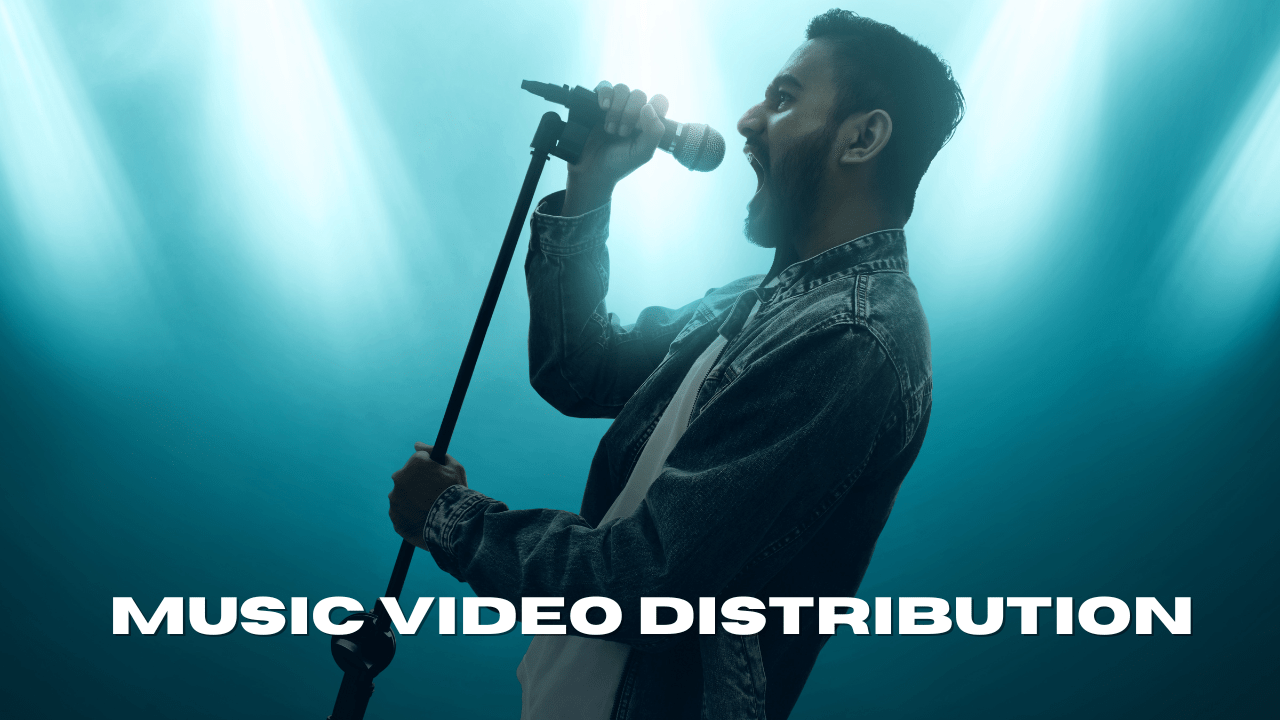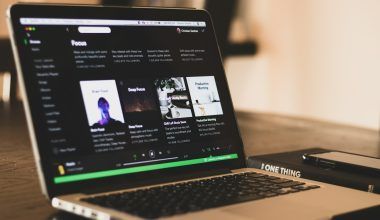In today’s digital age, creating a compelling music video is just the beginning of an artist’s journey. The real challenge is ensuring that your masterpiece reaches as many viewers as possible. This is where music video distribution comes into play. Proper distribution can transform your video from a hidden gem into a viral sensation, reaching audiences far beyond your immediate fanbase. In this extensive guide, we’ll delve into everything you need to know about music video distribution, including how to choose the right platforms, optimize your content for maximum reach, and sustain your video’s momentum long after its release.
The Evolution of Music Video Distribution
The landscape of music video distribution has evolved dramatically over the years. In the past, artists relied heavily on music television channels like MTV and VH1 to broadcast their videos. These channels had a significant influence on an artist’s success, but they also served as gatekeepers, limiting access for many independent musicians. Today, the digital revolution has democratized the process, allowing artists to distribute their videos on a wide array of platforms without needing approval from traditional gatekeepers. This shift has opened up numerous opportunities for artists, but it has also introduced new challenges in managing and optimizing distribution across multiple channels.
The Impact of Music Video Distribution on an Artist’s Career
Music video distribution is more than just a way to get your content out there; it’s a critical component of your overall career strategy. A well-executed distribution plan can:
- Expand your audience: Reach new listeners and viewers who may not have discovered your music through traditional audio channels.
- Boost your brand: Strengthen your brand identity by showcasing your visual style and artistic vision.
- Drive revenue: Increase your earning potential through ad revenue, sponsorships, and direct sales linked to your video.
- Engage your fans: Foster a deeper connection with your audience by providing them with visual content that complements your music.
Understanding the Basics of Music Video Distribution
Before diving into the specifics of platforms and strategies, it’s essential to understand what music video distribution entails. At its core, music video distribution is the process of making your video accessible to viewers on various platforms. This can include traditional broadcast channels, online streaming services, social media, and video-on-demand platforms. Effective distribution requires careful planning and an understanding of where your target audience is most active.
Key Elements of Effective Music Video Distribution
To ensure that your music video distribution efforts are successful, consider the following key elements:
- Target Audience Analysis: Understanding who your audience is and where they consume content is crucial. This will guide your platform selection and distribution strategy.
- Platform Compatibility: Not all platforms are the same. Each has its unique features, audience, and requirements. Tailoring your video to fit these specifications will enhance its performance.
- Timing and Scheduling: Timing plays a significant role in distribution. Releasing your video at a time when your audience is most active increases the chances of engagement.
- Promotion and Marketing: Even the best videos need a push. Effective promotion and marketing strategies are essential to drive traffic to your video.
Choosing the Right Distribution Platform
Selecting the right platforms for music video distribution is a critical step in ensuring your video reaches its full potential. Different platforms cater to different audiences, and understanding these nuances can make a significant difference in the success of your video.
YouTube: The Giant of Music Video Distribution
YouTube is undeniably the largest platform for music video distribution, with billions of users and an unparalleled global reach. The platform’s search engine capabilities also make it a powerful tool for discovery, allowing your video to be found by people who may not already know you.
- Pros: Massive global audience, potential for monetization through ads, detailed analytics to track video performance.
- Cons: Highly competitive, requiring consistent uploads and content management to stay relevant.
Optimizing Your Video for YouTube
To maximize your success on YouTube, it’s essential to optimize your video with the platform’s algorithms in mind:
- Title and Description: Use a compelling, keyword-rich title that accurately reflects your content. Include important keywords in the first 100 characters of your description.
- Tags: Use relevant tags that describe the content of your video. This helps in categorizing your video and improving its discoverability.
- Thumbnails: Create a custom thumbnail that stands out. Thumbnails should be visually appealing and give viewers a clear idea of what to expect from the video.
- Engagement: Encourage viewers to like, comment, and subscribe to your channel. Engagement signals to YouTube that your video is valuable, increasing its chances of being promoted.
Vimeo: The Platform for High-Quality Content
Vimeo is another popular choice for music video distribution, particularly for artists who focus on high-quality, cinematic content. Unlike YouTube, Vimeo is known for its community of professional filmmakers and creators, making it an ideal platform for videos that emphasize artistic expression.
- Pros: Superior video quality, a professional community that appreciates high-caliber content, no ads.
- Cons: Smaller audience compared to YouTube, with less emphasis on mainstream music.
Best Practices for Vimeo Distribution
To succeed on Vimeo, focus on the following:
- High-Quality Uploads: Vimeo’s audience expects top-notch quality, so ensure your video is shot in HD or 4K.
- Detailed Descriptions: Use the video description to tell the story behind the video, including any relevant credits or behind-the-scenes details.
- Community Engagement: Engage with the Vimeo community by commenting on other creators’ videos and participating in groups or channels related to your genre.
Social media platforms like Facebook & Instagram have become integral to music video distribution. These platforms offer unique features that allow artists to engage directly with their audience, making them ideal for building hype and encouraging shares.
- Pros: Immediate feedback from fans, viral potential, opportunities for live interaction.
- Cons: Content has a short lifespan, requires constant engagement and content updates.
To make the most of social media platforms, consider these strategies:
- Short-Form Content: Create short, attention-grabbing clips from your video to share on platforms like Instagram and TikTok. These can serve as teasers to drive traffic to the full video.
- Live Streams: Use live streaming features on platforms like Instagram and Facebook to premiere your video or host a Q&A session with fans.
- Interactive Features: Engage your audience with polls, questions, or challenges related to your music video.
Music Video Distribution Services: Streamlining the Process
Using a dedicated music video distribution service can simplify the process of getting your video on multiple platforms. These services handle the technical aspects of distribution, allowing you to focus on creating and promoting your content.
- Pros: Access to multiple platforms from a single service, streamlined distribution process, often includes additional promotional tools.
- Cons: May involve fees or revenue-sharing agreements, less control over individual platform strategies.
Popular Music Video Distribution Services
Some well-known music video distribution services include:
- DistroKid: Offers distribution to platforms like YouTube, Apple Music, and Tidal. It’s user-friendly and relatively affordable.
- Vevo: A more exclusive service that provides distribution on its own high-traffic network, as well as YouTube and other platforms.
- TuneCore: Another popular choice for independent artists, offering distribution to a wide range of platforms with detailed analytics.
Preparing Your Video for Distribution
Before you begin the distribution process, it’s crucial to ensure that your video is optimized for the platforms you plan to use. Proper preparation can significantly impact the success of your music video distribution efforts.
Ensuring Video Quality
High-quality video is essential for making a strong first impression. Viewers are more likely to engage with and share content that is visually appealing and professionally produced. Here’s what you should focus on:
- Resolution: Aim for at least 1080p HD, although 4K is increasingly becoming the standard, especially on platforms like YouTube and Vimeo.
- Audio Quality: Ensure that the audio is clear, well-mixed, and free of distortion. Consider using professional mastering services to enhance the audio quality.
- Lighting and Visual Effects: Good lighting can make a significant difference in the quality of your video. Use natural light or professional lighting setups to highlight the best aspects of your visual content.
Optimizing Metadata for Discovery
Metadata plays a crucial role in how your video is discovered and ranked on various platforms. This includes titles, descriptions, tags, and any other information that helps categorize your video.
- Title: Create a catchy and descriptive title that includes relevant keywords. For example, if your video is about music video distribution, include that phrase in the title.
- Description: Write a detailed description that provides context for your video. Include keywords naturally within the text to improve SEO.
- Tags: Use tags to describe the content and themes of your video. This helps platforms categorize your video and recommend it to viewers who are interested in similar content.
Creating Engaging Thumbnails
Thumbnails are often the first thing viewers see when browsing through videos. A well-designed thumbnail can significantly increase your video’s click-through rate.
- Design Tips: Use bright colors, bold text, and a clear image that represents the content of your video. Ensure that the thumbnail is not cluttered and that the text is legible, even on smaller screens.
- Consistency: If you’re building a brand, consider using a consistent style across all your thumbnails. This helps with brand recognition and makes your videos easily identifiable.
Subtitles and Captions
Adding subtitles or captions to your music video can improve accessibility and broaden your audience. Subtitles can also help with SEO, as the text can be indexed by search engines.
- Accessibility: Subtitles make your video accessible to viewers who are deaf or hard of hearing, as well as those who speak different languages.
- SEO Benefits: Including keywords in your subtitles can help improve your video’s search rankings.
Launching Your Music Video
The launch phase is where all your preparation pays off. How you launch your music video can significantly impact its initial success and long-term reach.
Building anticipation before the official release of your video is crucial. A well-executed teaser campaign can create buzz and ensure that your audience is ready and waiting when the video drops.
- Social Media Teasers: Share short clips, behind-the-scenes footage, or countdown posts on your social media channels. This not only builds excitement but also keeps your audience engaged.
- Email Newsletters: If you have a mailing list, send out a teaser email with exclusive content, such as a sneak peek of the video or early access to the release date.
- Collaborative Content: Partner with other artists or influencers to create collaborative content that ties into your music video. This can introduce your video to new audiences and generate additional interest.
The Power of Influencers
Influencers have become a powerful tool in digital marketing, and they can play a crucial role in your music video distribution strategy. Collaborating with influencers who resonate with your target audience can amplify your reach.
- Choosing the Right Influencers: Look for influencers who align with your brand and have an engaged following that matches your target audience.
- Collaborative Posts: Work with influencers to create posts that promote your music video. This could be a reaction video, a behind-the-scenes look at the making of the video, or a live watch party.
- Influencer Takeovers: Consider allowing an influencer to take over your social media accounts for a day to promote the video. This can create a unique and engaging experience for your followers.
Live Premieres and Events
A live premiere can turn the release of your music video into an event. Platforms like YouTube, Facebook, and Instagram allow you to premiere your video live, enabling fans to watch and comment in real-time.
- Scheduling a Premiere: Set a specific date and time for the premiere and promote it across all your channels. Encourage your fans to tune in live and engage with the content.
- Engagement During the Premiere: Interact with viewers during the premiere by responding to comments and questions. This creates a sense of community and makes the experience more interactive.
- Post-Premiere Activities: After the premiere, keep the momentum going by hosting a Q&A session, a live performance, or a behind-the-scenes breakdown of the video.
Cross-Promotion Across Platforms
Leveraging your presence on multiple platforms is essential for maximizing the reach of your music video distribution efforts. Cross-promotion involves sharing your video and related content across all your online channels.
- Social Media Integration: Share the YouTube link to your video on Instagram, Twitter, and Facebook. Use platform-specific features like Instagram Stories or Twitter Moments to highlight the video.
- Website and Blog Integration: Embed the video on your website or blog. Write a blog post about the making of the video or the inspiration behind it, and include the video as part of the content.
- Email Campaigns: Send out a newsletter to your subscribers with the video link. Include a personal message or offer exclusive content to incentivize sharing.
Maximizing Reach Post-Launch
After your video has been launched, the work doesn’t stop. Maximizing its reach involves ongoing efforts to keep the content alive and continuously attract new viewers.
Engaging with Your Audience
Audience engagement is key to keeping your video relevant over time. The more you interact with your viewers, the more likely they are to share your video and recommend it to others.
- Respond to Comments: Take the time to respond to comments on your video. Engaging with viewers makes them feel valued and can encourage further interaction.
- Host Follow-Up Content: Create follow-up content related to your video, such as a behind-the-scenes look, a tutorial, or a director’s commentary. This keeps the conversation going and gives your audience more reasons to revisit the video.
- User-Generated Content: Encourage your fans to create their own content related to your video, such as covers, remixes, or reaction videos. Feature the best ones on your social media channels or in a follow-up video.
Monitoring Video Analytics
Understanding how your video is performing is crucial for refining your music video distribution strategy. Most platforms offer detailed analytics that provide insights into viewer behavior, engagement, and demographics.
- Key Metrics to Track: Monitor views, watch time, audience retention, and engagement rates. These metrics can give you a clear picture of how well your video is resonating with your audience.
- Adjusting Your Strategy: Use the insights gained from your analytics to make adjustments to your ongoing promotion efforts. For example, if you notice a drop in engagement after a certain point in the video, you might consider creating shorter content or re-editing the video for better pacing.
- Benchmarking Success: Compare the performance of your video to previous releases or industry benchmarks. This can help you set realistic goals and measure your success over time.
Leveraging Paid Advertising
Paid advertising can be an effective way to boost your music video distribution efforts, especially if you’re looking to reach a wider audience or target specific demographics.
- YouTube Ads: YouTube offers several ad formats, including TrueView ads, which allow viewers to skip after a few seconds, and bumper ads, which are short, non-skippable ads. Use these to target specific audiences based on demographics, interests, or viewing behavior.
- Social Media Ads: Platforms like Facebook, Instagram, and TikTok allow you to create targeted ads that promote your video to users who are most likely to be interested. Experiment with different formats, such as video ads, carousel ads, or sponsored stories.
- Retargeting Campaigns: Use retargeting ads to reach viewers who have already interacted with your content but haven’t taken a specific action, such as subscribing to your channel or sharing the video. Retargeting helps reinforce your message and encourages users to engage further.
Sustaining Momentum Through Continuous Promotion
Even after the initial buzz has died down, it’s important to keep promoting your music video. Continuous promotion ensures that your video remains relevant and continues to attract new viewers.
- Seasonal and Thematic Reposts: Re-share your video during relevant seasons, holidays, or events. For example, if your video has a summer vibe, repost it as summer approaches with a fresh caption or hashtag.
- Collaborations and Remixes: Collaborate with other artists to create remixes or alternate versions of your video. This not only extends the life of your content but also introduces it to a new audience.
- Feature in New Content: Incorporate clips from your video into new content, such as interviews, vlogs, or promotional trailers. This keeps your video in circulation and reminds viewers of its existence.
Monetizing Your Music Video
One of the significant benefits of music video distribution is the potential for monetization. Turning your video into a revenue stream can help sustain your music career and fund future projects.
Ad Revenue on Platforms
Platforms like YouTube allow you to monetize your videos through ads. The more views and engagement your video receives, the more revenue you can generate from ad placements.
- Joining the YouTube Partner Program: To start earning ad revenue on YouTube, you’ll need to join the YouTube Partner Program (YPP). This requires meeting certain criteria, such as having at least 1,000 subscribers and 4,000 watch hours over the past 12 months.
- Ad Formats: Experiment with different ad formats, such as display ads, overlay ads, skippable video ads, and non-skippable video ads, to see what works best for your audience.
Sponsored Content and Partnerships
Sponsorships and partnerships offer another lucrative avenue for monetizing your music video. By collaborating with brands or companies, you can create sponsored content that aligns with your artistic vision.
- Finding the Right Sponsors: Look for brands that align with your image and audience. Approach companies that your fans already use and trust.
- Creating Sponsored Content: Incorporate the brand naturally into your video, whether through product placement, a mention in the lyrics, or a storyline that features the brand. Ensure that the content feels authentic and aligns with your artistic style.
Direct Sales and Merchandise
Offering exclusive content for sale, such as downloadable versions of your music video or behind-the-scenes footage, can be a great way to monetize your work. Additionally, promoting merchandise through your video can increase sales.
- Creating Exclusive Content: Consider offering a limited edition version of your video, special features, or early access to new music as a paid download or part of a bundle.
- Merchandise Integration: Use your video to promote merchandise related to your music. Include links to your online store where fans can purchase items like T-shirts, posters, or physical copies of your music.
Crowdfunding and Fan Support
Platforms like Patreon or Kickstarter allow you to monetize your video by gaining financial support directly from your fans. Crowdfunding can be particularly effective if you have a dedicated fanbase willing to support your projects.
- Offering Tiers of Support: Create different levels of support with corresponding rewards, such as exclusive access to new content, personalized messages, or limited-edition merchandise.
- Building a Community: Use crowdfunding platforms to build a community around your music. Engage with your supporters regularly, share updates, and offer them a behind-the-scenes look at your creative process.
The Future of Music Video Distribution
As technology continues to evolve, so too does the landscape of music video distribution. Staying ahead of these trends will help you remain competitive and innovative in your approach.
The Rise of Virtual Reality (VR) and Augmented Reality (AR)
VR and AR technologies are poised to revolutionize how we experience music videos. These immersive technologies allow fans to interact with your video in new and exciting ways, creating a more engaging experience.
- Creating VR Experiences: Consider producing a VR version of your music video that allows fans to explore the environment in 360 degrees. This could be particularly effective for music genres that emphasize visual storytelling.
- Augmented Reality Enhancements: Use AR to add interactive elements to your video. For example, fans could use their smartphones to interact with characters or objects in the video, bringing the story to life in a whole new way.
Blockchain and NFTs: A New Frontier
Blockchain technology and non-fungible tokens (NFTs) are transforming the way artists distribute and monetize their content. NFTs allow artists to sell unique, collectible versions of their music videos, while blockchain provides a secure and transparent method of distribution.
- Selling NFTs: Create limited-edition NFTs of your music video, offering fans exclusive ownership of digital content. This not only provides a new revenue stream but also builds a sense of exclusivity and community around your work.
- Blockchain Distribution: Use blockchain technology to distribute your music video securely, ensuring that you retain control over your content and receive fair compensation for its use.
Personalization Through AI
Artificial Intelligence (AI) is increasingly being used to personalize the content experience for viewers. By analyzing user data, AI can recommend your music video to viewers who are most likely to enjoy it, increasing your reach and engagement.
- AI-Powered Recommendations: Platforms like YouTube and Spotify already use AI to recommend content to users based on their viewing habits. Ensuring that your video is optimized for these algorithms can help increase its visibility.
- Customized Viewing Experiences: In the future, AI could enable viewers to experience personalized versions of your music video, where the visuals or storyline change based on their preferences or previous interactions.
Conclusion
Music video distribution is a vital component of an artist’s career strategy. With the right approach, you can maximize the reach and impact of your videos, engage with a global audience, and generate revenue that supports your ongoing creative endeavors. By understanding the various platforms available, preparing your content for optimal distribution, and leveraging new technologies and trends, you can stay ahead of the curve and ensure that your music video resonates with viewers worldwide.
As the landscape of music video distribution continues to evolve, staying informed and adaptable is key. Whether you’re an emerging artist looking to make your mark or an established name seeking to expand your reach, mastering music video distribution is essential for long-term success in the ever-changing music industry.
For further reading, explore these related articles:
- Best Music Video Distribution Platforms in 2024
- The Bhojpuri Music Industry: A Cultural Powerhouse with Global Aspirations
- How to Create a Music Channel: A Comprehensive Guide
For additional resources on music marketing and distribution, visit Deliver My Tune.






